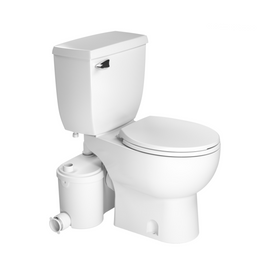
Save time and Money in Your Backyard With Permaculture
Last Updated: Feb 23, 2025Landscaping choices can have a significant impact on your water usage and your overall carbon footprint, how cool or hot your backyard is (due to the heat island effect), and your overall well-being. And the choices can be overwhelming. But there is a practical framework if you're willing to dive in: the 12 design principles of permaculture.
Permaculture is a set of design principles centered on mimicking nature and working with nature's natural cycles. While often associated with larger agricultural practices, it is gaining traction at the individual homeowner level.
Principle #1: Observe and Interact
Observation and interaction is a slow process the homeowner takes over an entire year on their property. In this time, they watch how nature cycles through their yard by noting things like when specific flowers bloom when birds first arrive or the places that weeds keep creeping in. Pattern observation is the first step in any permaculture design, even before your site analysis using Zones and Sectors.
The first principle is about using thoughtful and protracted observation to notice large-scale patterns on your property. These can be things from wind, sun, and water to plants and animals. By noting these patterns, you begin to note the natural systems at play in your backyard. This helps guide your future placement of features, like maybe that Outdoor Living Space you've always wanted. These patterns can happen daily or be seasonal, and by understanding when and why they occur, you can learn to account for them instead of struggling against them. By choosing designs that utilize nature's strength and resilience, you help create a natural flow of elements through your land. Next time you are outside, try observing how nature cycles energy, supports diversity and generates no waste. Just remember to look at what happens on your property over the different seasons and make decisions that adapt to them.
But wait, weren't these supposed to be permaculture principles to help save labor and money today? Well, they are, and there are many ways you can observe and interact today. By going for a walk and getting a good look at the area where you live, you begin to see what plants and animals are already present and which ones seem to be doing better than others. This gives you immediate ideas on what systems may work best in your area, saving you from costly trial and error. Even noting local resources, like businesses and services, can cut down on the commute from the house, saving you time and fuel money. And if some of those businesses are a few blocks away, a walk on a sunny day can give you plenty to observe.
Principle #2: Catch and Store Energy
The homeowner can catch and store many forms of energy on sunny and rainy days, saving money in the long run and having backup power when the power goes out for everyone else. On large and small properties alike, the more elemental forces you can harness, the better. To do this effectively, you need first to observe the best placement of systems. Are your solar panels are southward facing; are your gutters connected to a rainwater catchment system; is your garden in a place where it will get enough sunlight? With southward facing houses, capturing energy through passive solar is a great low-tech, green energy technology. And with low-tech solutions, catching and storing nature's energy at the home level reduces the amount of air conditioning and heating needed for thermal comfort.
Table of Contents
- Principle #3: Obtain a Yield (= Grow Food)

Efficient energy planning reduces our overall ecological footprint, consequently saving us money. And we need to remember all energies can be stored, including energy stored in the plants that make up our yard. Plants use sunlight to create photosynthesis and repair the land and air. The best types of plant system for this are perennials. The established roots of the perennials allow them to grow larger with less watering and feeding. Annual systems, by contrast, need to be set up each year, costing money, time, and physical energy. And when the plants have collected their fill of solar energy, they store it in their fruits and vegetables, which can be generated in surplus and shared with friends and neighbors.
If you look at energy in this way, every square foot of a property can be used to catch and store energy! When placed in the right spot, even a water tank acts as a collector of thermal energy, creating a microclimate around the tank and keeping the surrounding area slightly warmer. The more natural sources of energy you can take advantage of, the better for the environment.
Principle #3: Obtain a Yield (= Grow Food)
When the season is right, the everyday gardener can cut down on food costs, packaging waste, and transportation costs of goods by growing plants in your front or back yard that will produce a bountiful yield. Imagine a yard bursting with color, fragrant flowers blooming every week of the growing season, your yard a buzz with beneficial pollinators, and a fully edible garden—so abundant that food practically falls in your lap as you rest in your hammock. This is possible as long as you carefully observe your property and choose suitable locations to place edibles to catch and store energy.

By ensuring that the plants you choose produce a yield, you are guaranteeing that the money you put into your property is coming back to you in a tangible way. Yes, annual flowers are beautiful and have a special place in bouquets and floral arrangements, but when you fill your space with local foods and herbal remedies, you are producing things that everyone in the house can use over the year. And by selecting perennial varieties, you are cutting out the need to buy seeds or plugs year after year.
When looking at the third principle, it's easy to think in two-dimensional terms. We envision our yards as length by width, but by allowing plants to share the same space, you can begin to design with density and take advantage of three dimensions with layering and stacking. For example, you can incorporate shade-loving medicinal herbs at the base of your fruit trees, with grapes or kiwis to vine up it, and berry bushes or ground cover around the tree's drip line (the edge of the canopy where water drips to the ground).
Tanner Sagouspe
Tanner Sagouspe has a Masters in Environmental Management and is a Permaculture Designer who promotes tackling the climate crisis at home.











